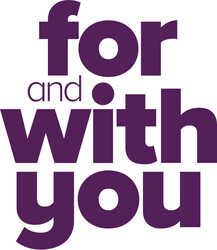Understanding debt – A guide to good and bad borrowing.
Debt is part of the everyday for many of us. We use it as a convenient way to make small purchases and it can be the key to helping us achieve important life goals like buying a car, getting an education or buying a home.
However, not all debt is created equal. It’s important to understand the different types of debt, how they can impact your financial wellbeing and how to distinguish between “good debt” and “bad debt”.
What is debt?
Debt is any money owed to someone else. It includes things like mortgages, car loans, credit card balances, personal loans and buy now pay later balances.
Good debt and bad debt – what’s the difference?
Most of us think of debt as a bad thing, but debt can also be advantageous. Used appropriately, it can help us build wealth and achieve financial security and wellbeing. Let’s explore the distinction between “good debt” and “bad debt”.
What is good debt?
“Good debt” is borrowing that is intended to increase your net worth or generate future income. Examples include:
Mortgages – Buying a home is one of the most significant investments most people make. A mortgage allows you to buy a home that you probably couldn’t afford to buy outright. It will probably appreciate in value over time, especially if you consider the long term, it will provide a stable living arrangement and it will eliminate your rent.
Student loans – Education is often considered an investment in your future. Used wisely, debt can help you further your education which could improve your job prospects and lead to a higher income.
Business loans – A loan to start or expand a business can help you generate future income and could also result in an asset you can sell in the future.
What is bad debt?
On the other hand, “bad debt” is debt that doesn’t contribute to your financial wellbeing and is usually more about funding the short term rather than the long term. Examples include:
Credit card debt – This one is a bit tricky because credit cards can certainly make life more convenient and provide a useful form of short-term credit. But it’s an expensive form of credit (the interest rates are high) and carrying a large credit card debt from month to month can be a big drain on your finances.
Pay day loans – These short-term loans are marketed as a quick fix to immediate financial challenges, but they come with extremely high interest rates and fees. Pay day loans make it very easy to get trapped in a cycle of debt that is difficult to escape.
Buy now, pay later schemes – BNPL has become very popular in the last couple of years. Whilst it’s enjoyable to be able to take ownership of something now that you can't afford to pay for, you need to be careful that you aren’t left carrying the debt well after the gloss has faded from whatever you’ve purchased.
Personal loans used for non-essential purposes – Borrowing money to fund non-essential things like holidays, luxury goods and entertainment can cause significant financial strain. It's easy to see how the short-term joy of these things can leave you with a longer-term financial problem as you pay back the loan.
How to minimise your debt.
To reduce your bad debt, it helps to:
Regularly evaluate your debt – Consider what debts you have, whether they are “good” or “bad” and how you can pay off the bad debts.
Borrow wisely – When tempted to take new debt, think about whether it’s going to improve your financial wellbeing in the future or if it’s more about short-term enjoyment. If it’s more about short-term enjoyment, try to think of ways to avoid going into debt.
Stay on top of your debt – Build a debt management plan that helps you reduce your bad debts and even your good debts as soon as you practically can. Read through our debt management guide for tips on how to do this.
We’re here to help.
Whether you are working on a debt management plan, trying to eliminate some bad debt or looking to borrow for a good cause, we are here to help.
Please read this important information.
This information is of a general nature only and does not take into consideration your objectives, financial situation or needs. The information must not be relied upon as financial product advice. Before acquiring any product, you should read the relevant guides, Product Disclosure Document, and consider whether a product is suitable for your circumstances to decide if a product is right for you.






